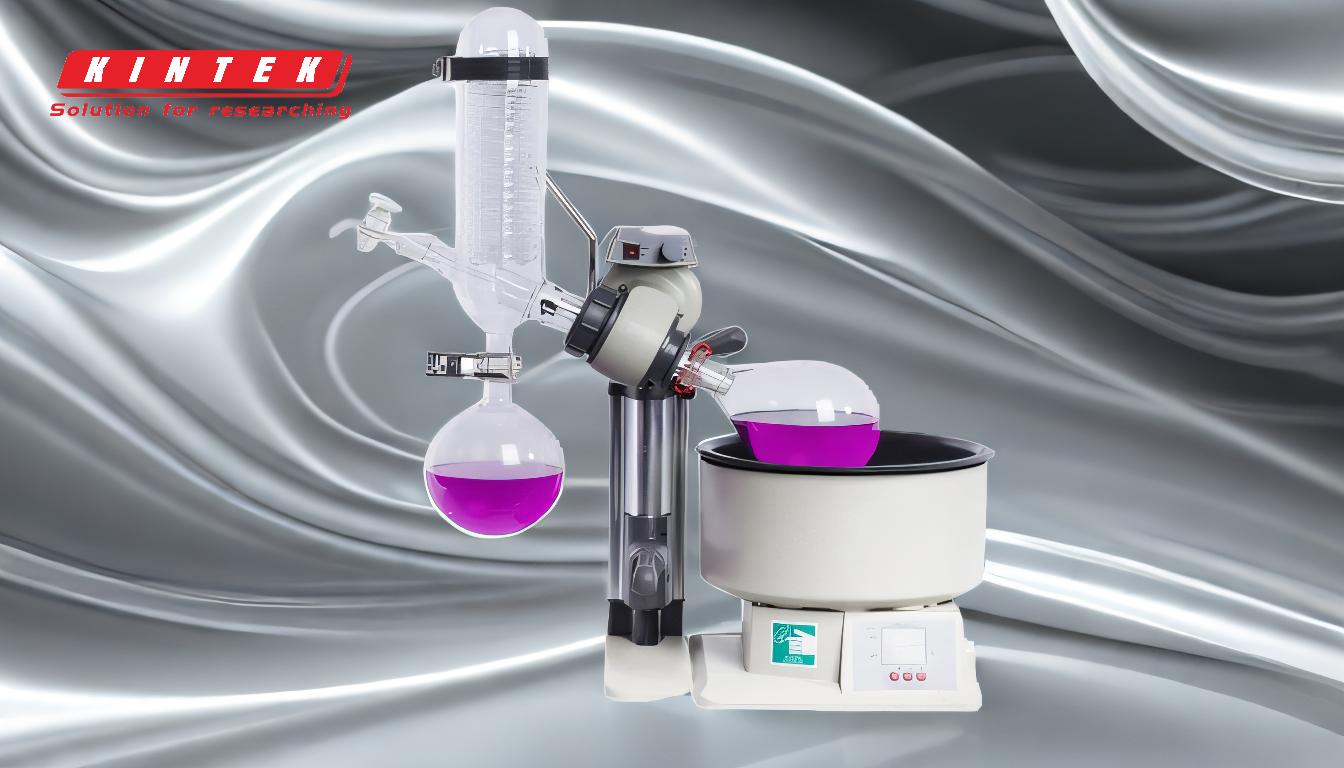The design of an evaporator is influenced by several critical factors, including the maximum allowable temperature, fluid viscosity, heat transfer efficiency, and the tendency of the liquid to foam. These factors ensure that the evaporator operates efficiently without damaging heat-sensitive materials or causing operational issues like overheating or poor separation of liquid and vapor. Additionally, considerations such as sample size, solvent volatility, and desired outputs are crucial when selecting an evaporator for laboratory use, ensuring it aligns with the specific requirements of the application.
Key Points Explained:

-
Maximum Allowable Temperature:
- The maximum temperature an evaporator can handle is a critical design factor, especially for heat-sensitive materials. Many substances degrade or react at high temperatures, so the evaporator must operate below these thresholds.
- In laboratory settings, this is particularly important for biological samples or volatile solvents that may decompose or evaporate too quickly if exposed to excessive heat.
- The reference highlights that the maximum allowable temperature may be "substantially below 100°C," emphasizing the need for precise temperature control in evaporator design.
-
Fluid Circulation and Heat Transfer Efficiency:
- Efficient circulation of the liquid across heat transfer surfaces is essential to achieve high heat transfer coefficients. This ensures uniform heating and prevents localized overheating, which can damage the sample or reduce the efficiency of the process.
- Poor circulation can lead to "local overheating," which not only affects the quality of the sample but also increases the risk of equipment failure.
- Design features such as agitators or specialized flow paths are often incorporated to enhance circulation and heat transfer.
-
Fluid Viscosity:
- Viscosity plays a significant role in evaporator design, as it affects the flow characteristics of the liquid. As the concentration of dissolved materials increases, the viscosity often rises, making the fluid more difficult to circulate and evaporate.
- High viscosity can reduce heat transfer rates and increase energy consumption, so evaporators must be designed to handle fluids with varying viscosities.
- This consideration is particularly relevant in processes like concentration, where the viscosity of the solution changes as the solvent is removed.
-
Foaming Tendency:
- Some liquids have a tendency to foam during evaporation, which complicates the separation of liquid and vapor. Foaming can lead to carryover of liquid into the vapor phase, reducing the efficiency of the process and potentially contaminating the output.
- Design features such as anti-foaming agents or specialized vapor-liquid separators may be required to mitigate this issue.
- The reference specifically mentions that foaming "makes separation of liquid and vapour difficult," highlighting its importance in evaporator design.
-
Sample Heat Sensitivity:
- In laboratory applications, the heat sensitivity of the sample is a key factor in selecting an evaporator. Heat-sensitive samples require evaporators with precise temperature control and low operating temperatures to prevent degradation.
- This consideration ensures that the sample remains intact and usable after the evaporation process.
-
Solvent Volatility:
- The volatility of the solvent being evaporated affects the design and operation of the evaporator. Highly volatile solvents require faster evaporation rates and more efficient vapor recovery systems to prevent loss and ensure safety.
- This factor is particularly important in laboratory settings, where the recovery of solvents may be necessary for cost or environmental reasons.
-
Sample Size and Number of Samples:
- The size of the sample and the number of samples being processed simultaneously influence the design of the evaporator. Larger samples or high-throughput applications may require evaporators with larger capacities or multiple chambers.
- This ensures that the evaporator can handle the workload efficiently without compromising performance.
-
Desired Outputs:
- The desired outcome of the evaporation process, such as the concentration of a solution or the recovery of a solvent, dictates the design and operation of the evaporator.
- For example, achieving a high concentration may require a more robust heat transfer system, while solvent recovery may necessitate advanced vapor condensation and collection systems.
By carefully considering these factors, the design of an evaporator can be optimized to meet the specific needs of the application, ensuring efficient and effective operation.
Summary Table:
| Factor | Impact on Evaporator Design |
|---|---|
| Maximum Allowable Temperature | Ensures heat-sensitive materials are not damaged; often requires operation below 100°C. |
| Fluid Circulation | Prevents local overheating; enhances heat transfer efficiency with agitators or flow paths. |
| Fluid Viscosity | Affects flow and evaporation rates; high viscosity reduces heat transfer and increases energy use. |
| Foaming Tendency | Complicates liquid-vapor separation; may require anti-foaming agents or specialized separators. |
| Sample Heat Sensitivity | Requires precise temperature control to prevent degradation of heat-sensitive samples. |
| Solvent Volatility | Influences evaporation rate and vapor recovery systems; critical for safety and cost efficiency. |
| Sample Size and Number | Determines evaporator capacity; larger or high-throughput applications need larger systems. |
| Desired Outputs | Dictates design features like heat transfer systems or vapor condensation for specific results. |
Need help selecting the right evaporator for your lab? Contact our experts today!













